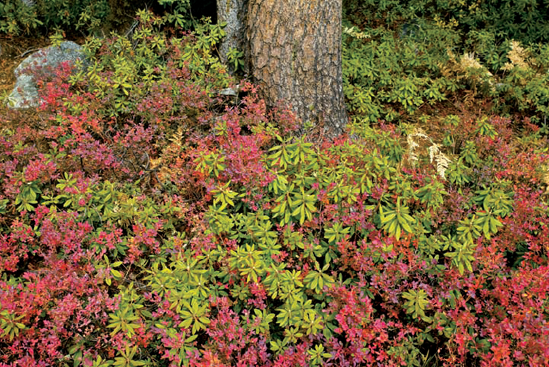20.3. How Can I Get the Best Shot?
Walking the trail on the southern shore of the lake and looking for good foregrounds rewards you with the best images. Look for fallen trees, nice reeds, or picturesque rocks to use as foreground elements to enhance the scene. Shoot both the grand scenics as well as details of reeds and grasses to create more personal images. Also concentrate on the shoreline. There are some very pretty details of the bushes and shrubs that grow along the lake, especially in autumn, which comes early to the High Country (see figure 20.1).
Figure 20.1. Autumn color on the north shore of Siesta Lake in the early afternoon. Taken at ISO 100, f/11, 1/80 second with a 17-40mm zoom lens at 40mm.

20.3.1. Equipment
Just a few lenses and filters are all you need to get good images of Siesta Lake.
20.3.1.1. Lenses
I find working with wide-angle lenses in the 14-28mm range and getting close and low to a strong foreground element to emphasize the foreground gives the viewer a place to start in the image, and creates a more dramatic image. If you want to do more artistic and abstract images of the reeds and grasses, then a short telephoto lens in the 100-200mm range works really well here.
20.3.1.2. Filters
The most useful filters you can use when photographing the Siesta Lake are a polarizing filter and a graduated neutral density filter.
Polarizing filter. This filter ...
Get Photographing Yosemite: Digital Field Guide now with the O’Reilly learning platform.
O’Reilly members experience books, live events, courses curated by job role, and more from O’Reilly and nearly 200 top publishers.

